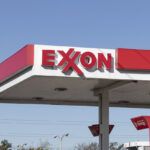Equal Energy Ltd. (ticker: EQU) sold its interests in Grant, Garfield and Alfalfa Counties, Oklahoma, to Atlas Resources Partners LP (ticker: ARP) for US$40 million. The Northern Oklahoma assets include production of 1,400 BOEPD (73% natural gas, 25% NGL, 2% oil), related infrastructure and interests in approximately 8,550 acres.
Flashback: In April 2012, EQU sold 50% of its interest in approximately 14,500 net undeveloped acres prospective for Mississippian light oil to ARP for total cash consideration of approximately US$18 million, or approximately $2,482 per acre.
Today’s announcement was EQU’s remaining divestiture of its interest in the Mississippian play in Northern Oklahoma.
Don Klapko, Equal Energy’s president and chief executive officer, summarized the reasoning for today’s sale of its remaining interest in four key points that OAG360 will discuss in greater detail below.
Reason #1: “…High grade our Oklahoma business by focusing on the Central Oklahoma area where the liquids content is higher than in the Northern asset,”
Simply put, the Hunton play’s production profile (as reported by Equal) is approximately 56% gas, 41% NGL, and 3% oil, providing a higher liquids content than its Mississippian acreage that is 73% natural gas, 25% NGL, 2% oil. OAG360 notes that companies like SandRidge Energy (ticker: SD) and Halcon Resources (ticker: HK) report crude oil and liquids content upwards of 80% in the Mississippian. In our opinion, this provides evidence that the Mississippian play’s variability should not be overlooked by investors looking for the next oil-homogenous area.
In addition, the Hunton play production stream closely matches the company’s current overall production breakdown. Adjusting for the sale, Equal’s July corporate production was 9,350 BOEPD consisting of 45% natural gas, 42% NGL’s and 13% oil.
[sam_ad id=”32″ codes=”true”]
Reason #2: “…Retain the majority of our Oklahoma assets providing significant upside for our shareholders associated with any recovery of natural gas and NGL prices to more historical levels,”
It’s never too early to get positive about natural gas prices. However, we believe the key phrase in this statement is “retain the majority of our Oklahoma assets”. The majority of Equal’s production comes from the Hunton. Since oil and natural gas companies receive lending lines based on reserves and cash flow, we believe the Mississippian, given its higher risk, and light production/reserves levels, net to Equal, was the lead candidate for a divestiture in order to pay down debt.
Reason #3: “…Best fit the risk-reward profile of a company our size in an area where we’ve had greater than 90 percent drilling success and have a multi-year inventory of drilling prospects, and”
In Central Oklahoma, Equal has drilled the Hunton play since the 1990s with a 90% drilling success rate. We challenge investors to describe how many successful wells are needed to prove up a play. Is it five wells? 10 wells? More than 20 wells? While the Mississippian has had a number of wells drilled into the play, mixed results have been reported with one common theme – these wells are expensive and tremendous water handling expertise is needed.
EQU has approximately 94 horizontal and 69 vertical wells producing in the Hunton, and is currently the only publicly traded company operating in the play. In our opinion, this would qualify the Hunton as an established play. Equal reports between 40 and 60 vertical and horizontal locations across the 7,300 net undeveloped acres providing a less risky (compared to the Mississippian) long-term drilling inventory for a company its size. At approximately $2.9 million per well to drill and complete, and IRRs ranging from 25% to 29%, the low-risk drilling profile of the Hunton fits Equal risk threshold when compared to Mississippian economics of upwards of $3.5 million per well to drill and complete, and IRRs at approximately 30% per well.
Reason #4: “…Further improve the Company’s balance sheet.”
In our opinion, perhaps the most important reason for the sale was to further improve Equal’s balance sheet. Equal received $2,500 per acre for the acreage plus six times annualized operating cash flows from the assets based on the first six months of 2012. The US$40 million in proceeds will be directly paid to pay down the approximately $110 million outstanding on its credit facility to approximately $70 million. Thus, Equal’s total debt will be reduced to $115 million reducing EQU’s pro forma debt to market capitalization as of the time of publication to 92%. EQU reiterated it is still undergoing a strategic review process focused on its Canadian strategy and potential transactions.








